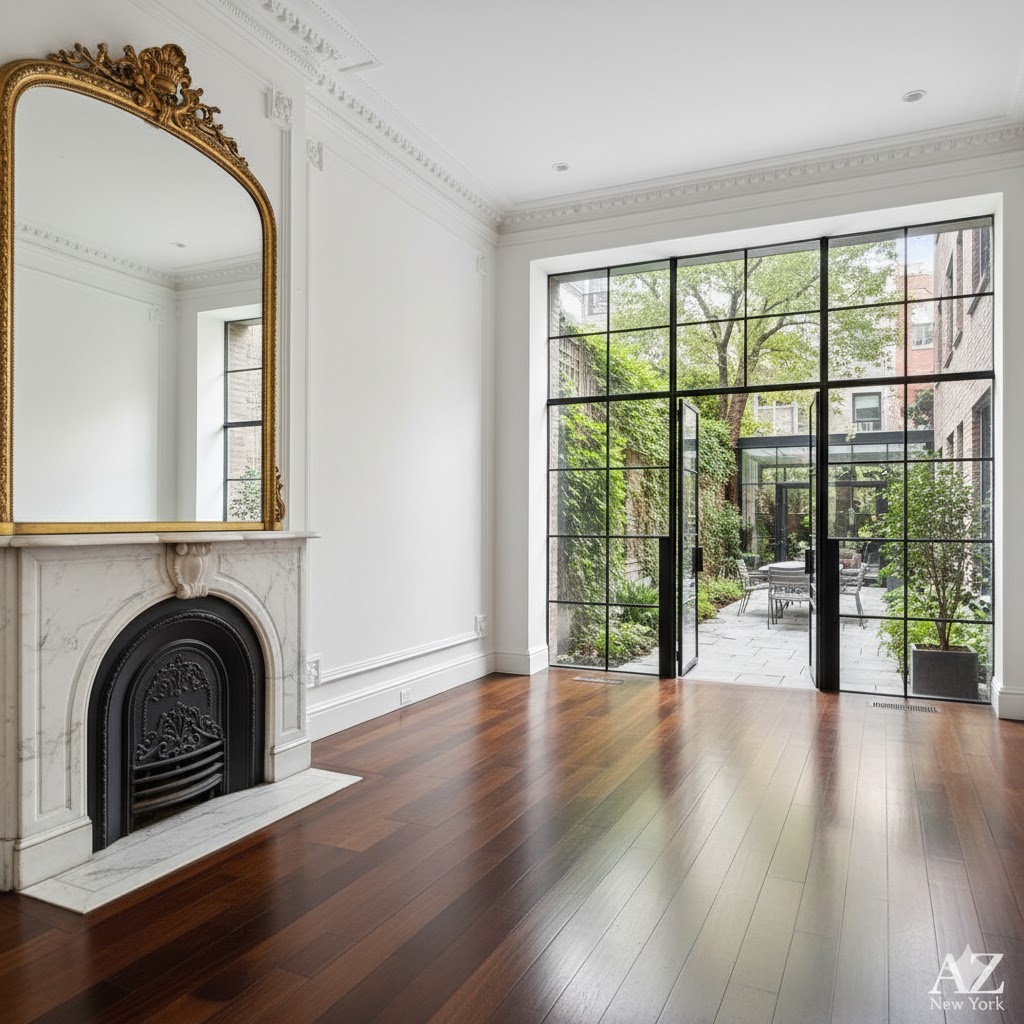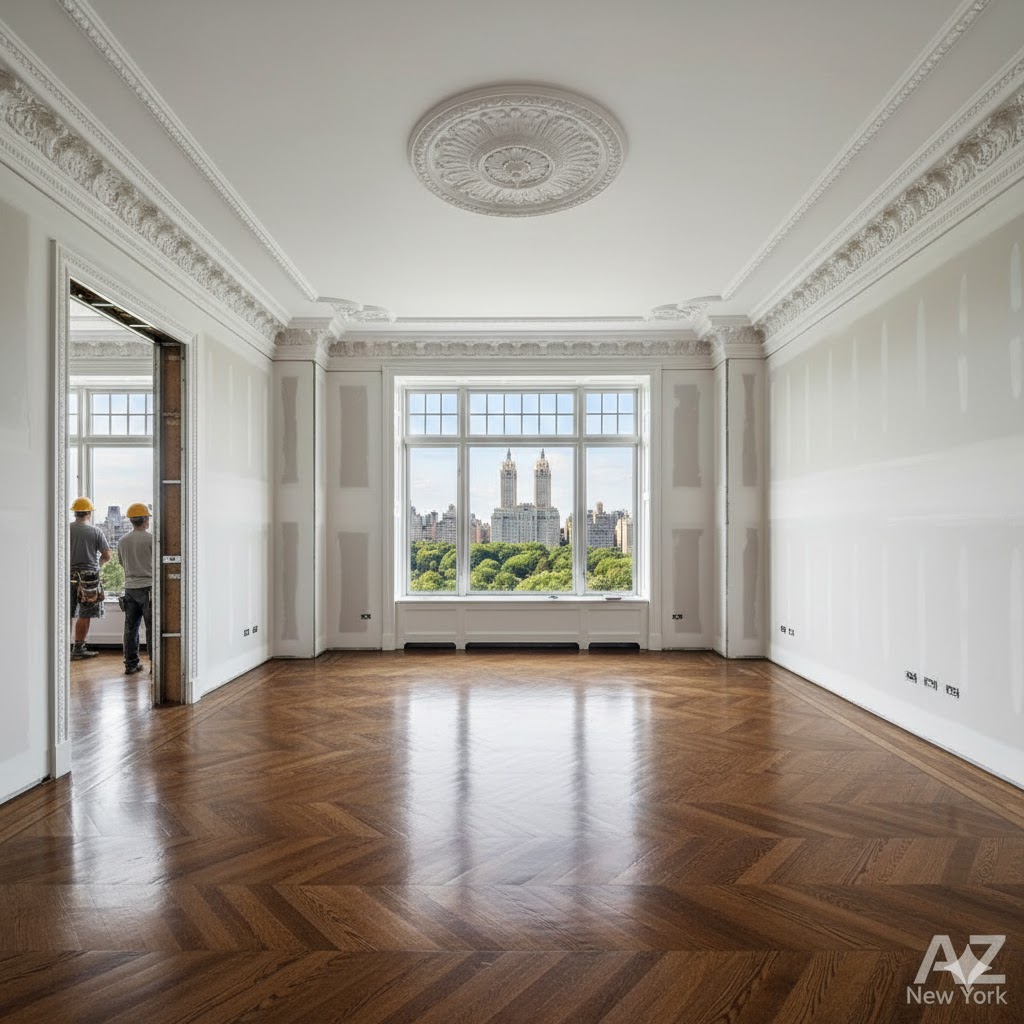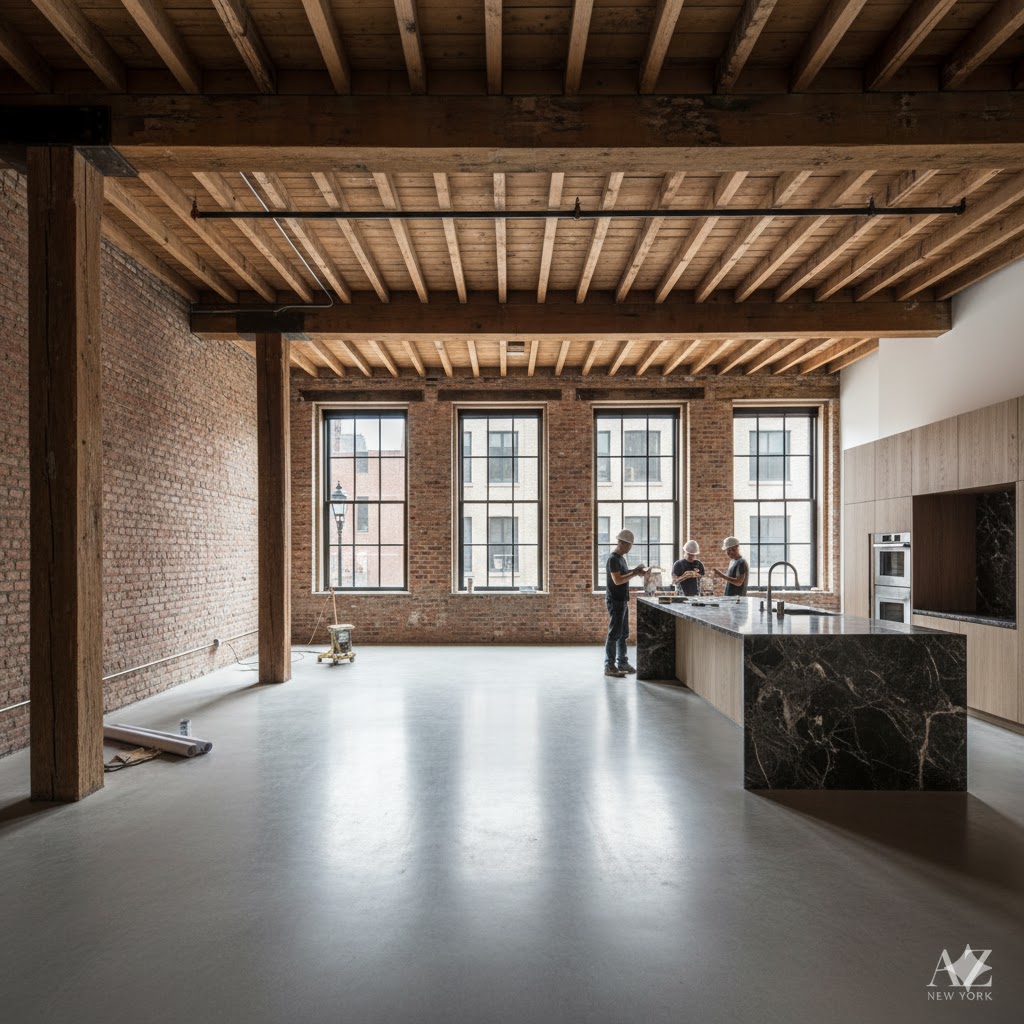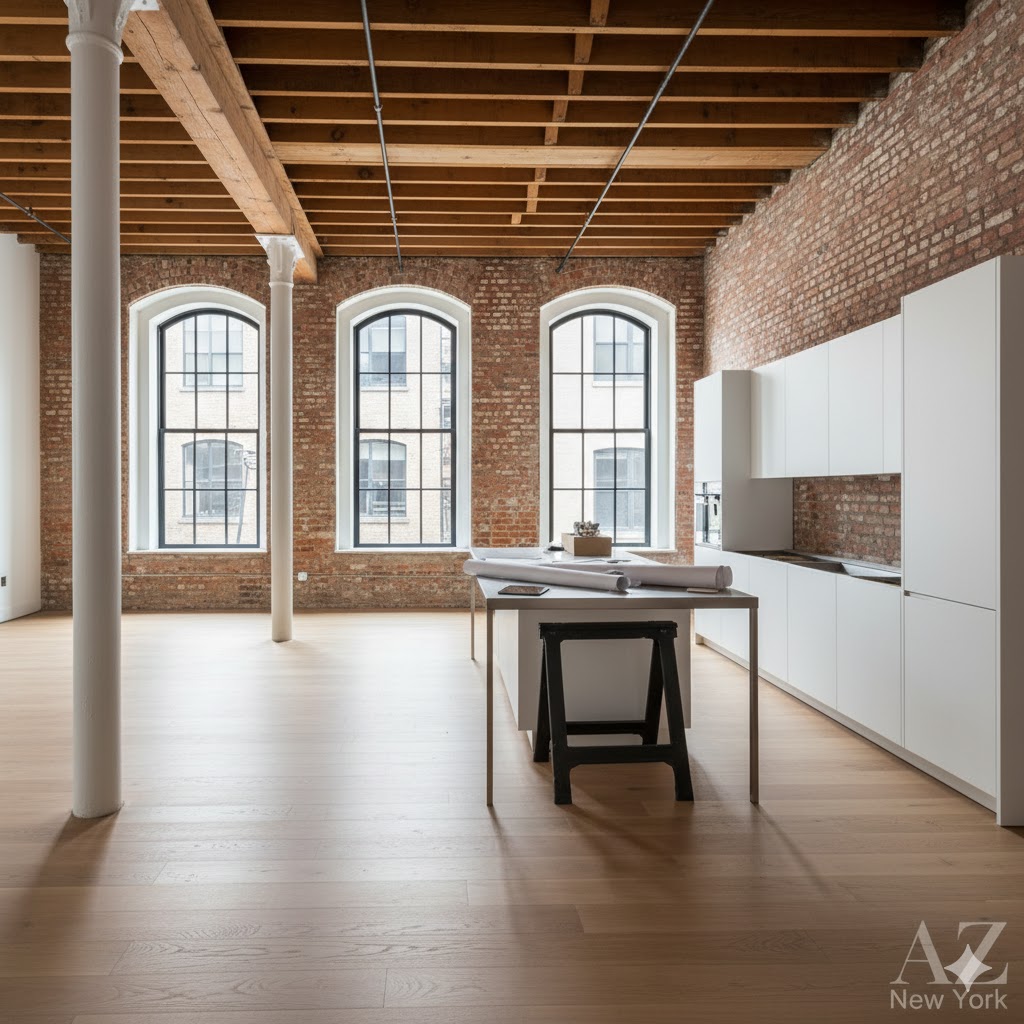What is the true human cost behind the multi-billion dollar profits generated in the Financial District?

What is the true human cost behind the multi-billion dollar profits generated in the Financial District?
The Financial District is synonymous with staggering wealth. We see the multi-billion dollar profits, the seven-figure bonuses, and the glamorous lifestyles portrayed in media.
But behind every blockbuster deal, there is a hidden ledger—one that tracks the profound human cost.
This cost is measured in sleepless nights, strained relationships, and a pervasive mental health crisis that has long been the industry’s dark, open secret. The true price of ambition is often paid not in dollars, but in well-being.
In this eighth, critical analysis, AZ New York examines the sacrifices and struggles that fuel the engine of Wall Street.
The Price of Ambition: A Culture of Burnout
The very foundation of the junior investment banking experience is a trial by fire. It’s a system designed to weed out all but the most resilient, but the intensity of that fire has left deep scars on a generation of financial professionals.
The 100-Hour Work Week as a Standard
For decades, the 100-hour work week was not an exaggeration; it was a baseline expectation for junior analysts. This translates to working from 9 AM to past midnight, seven days a week.
This chronic sleep deprivation and relentless pressure leads to a state of perpetual burnout. Recent public outcries from junior bankers have shed light on this grueling reality, forcing firms to re-evaluate these unsustainable demands.
The Mental and Physical Toll
The human body and mind are not designed for this level of sustained stress. The result is a silent epidemic of anxiety, depression, and substance abuse used as a coping mechanism.
While the industry has become more aware of mental health, a powerful stigma remains. Seeking help is often perceived as a sign of weakness in a culture that prizes invulnerability above all else.
The Golden Handcuffs: Trapped by Success
One of the most insidious aspects of a Wall Street career is how success itself can become a trap, making it nearly impossible to leave even when the job is detrimental to one’s health and happiness.
Strained Relationships and Sacrificed Lives
The immense time commitment required by a career in high finance leaves little room for anything else. Friendships, romantic relationships, and family connections are often the first casualties.
Birthdays are missed, vacations are canceled, and personal lives are put on hold indefinitely. The cost is a profound sense of isolation that no amount of money can truly compensate for.
The Inescapable Lure of Compensation
This is the “golden handcuffs” dilemma. By their late 20s or early 30s, successful bankers become accustomed to a lifestyle that is difficult to replicate in any other industry.
The prospect of leaving means a drastic reduction in income, trapping many in a high-paying but soul-crushing cycle they feel they cannot afford to escape.
Pro Tip: If you are in a high-pressure career, actively “schedule” personal time with the same seriousness you schedule a business meeting. Block out time in your calendar for exercise, hobbies, or dinner with family, and treat it as non-negotiable. This forces you to set boundaries and protects your well-being.
A Piece of History: The term “burnout” was not widely used until the 1970s, but the phenomenon is not new to Wall Street. During the panic of 1929, the stress was so immense that hotels near the Financial District reportedly began asking guests checking in if they wanted a room for sleeping or for jumping. While some stories are apocryphal, they reflect a long-standing public awareness of the life-and-death pressures of the market.
Frequently Asked Questions (FAQ)
This is a sensitive but important topic. Here are some key questions answered.
Is this culture finally changing with Gen Z?
Yes, but slowly. The newest generation of workers is more vocal about demanding work-life balance and mental health support. This has forced banks to implement changes like “protected weekends” and offer more wellness resources to attract and retain top talent.
What are banks doing to address this?
Most major banks now offer extensive mental health resources, including free therapy sessions and confidential hotlines. They are also using technology to automate mundane tasks to reduce grunt work. However, the fundamental high-stakes nature of the job remains.
Does the incredible pay make these sacrifices worth it?
This is a deeply personal question. For some, the financial rewards and the thrill of the work justify the cost. For a growing number of others, the answer is no, leading to an exodus of talent from Wall Street to the tech industry and other fields that offer a better quality of life.
For more insights into the professional landscape of the city, explore our Careers section.
Keywords for Your Next Internet Searches on the Subject…
Wall Street burnout, investment banking mental health, human cost of finance, work-life balance in banking, golden handcuffs finance, stress in financial careers, junior analyst lifestyle, Goldman Sachs 100-hour week.
Tags
Wall Street, Burnout, Mental Health, Investment Banking, Corporate Culture, Work-Life Balance, Golden Handcuffs, Financial District, FiDi, NYC Careers, High Finance, Stress Management, Anxiety, Corporate Life, Job Satisfaction, New York City, US Economy, Career Advice, Human Resources, Wellness
Part 1: Business, Economy, and Power (1–20)
This section explores the core of what makes the Financial District tick: the deals, the institutions, and the immense power that flows through its veins.
- What does it really mean to “work on Wall Street” today?
- How does the “investment banking” culture of FiDi shape the global economy?
- What is the true influence of the New York Stock Exchange (NYSE) on the daily lives of ordinary people?
- How deep is the connection between the political power of Washington D.C. and the decisions made on Wall Street?
- Does the “Charging Bull” still symbolize prosperity, or has it become an icon of corporate greed?
- What are the best-kept secrets of the major investment banks headquartered in FiDi?
- How is the rise of fintech and cryptocurrencies challenging the traditional financial dominance of Wall Street?
- What is the true human cost behind the multi-billion dollar profits generated in the Financial District?
- If the walls of Goldman Sachs or J.P. Morgan’s offices could talk, what would they reveal about power?
- Is Wall Street’s “work hard, play hard” culture sustainable in the long run?
- What is the role of the Federal Reserve Bank of New York in the stability (or instability) of the world economy?
- How ethical are the practices that led to the rise of so many financial empires in FiDi?
- What is the impact of artificial intelligence on the high-frequency trading that occurs on Wall Street?
- Who are the real “wolves” of Wall Street today?
- How is the gentrification of the Financial District transforming the social and economic landscape of Lower Manhattan?
- What is the next major financial crisis that could emerge from Wall Street?
- What does the concentration of so much financial power in a single area say about social inequality in the U.S.?
- How does the annual bonus culture on Wall Street affect the mindset and decisions of traders?
- What is the true story behind the fortunes built and lost on Wall Street?
- If the Financial District were a country, what would its GDP and foreign policy be?
Part 2: Lifestyle, Behavior, and Wall Street Culture (21–40)
Beyond the numbers, there’s a unique culture. This section delves into the daily lives, habits, and social dynamics of the people who power the Financial District.
- What is the unwritten dress code for success in FiDi?
- What is the daily routine of a junior analyst at an investment bank on Wall Street?
- What role do happy hours play in the networking and deal-making culture of the Financial District?
- Is life in FiDi more like the show “Billions” or the movie “The Wolf of Wall Street”?
- What are the most coveted status symbols among Wall Street professionals?
- How does the pressure to perform affect the mental health of workers in the Financial District?
- What is the “secret language” and jargon used by Wall Street insiders?
- Is there a “Wall Street dream” analogous to the “American dream”?
- How do FiDi professionals balance their personal lives with the long working hours?
- What is the role of exclusive clubs and secret societies in Wall Street’s power hierarchy?
- How has Wall Street’s culture changed since the 2008 financial crisis?
- What do “Wall Street bros” do for fun on the weekends?
- What is the soundtrack to the life of a successful trader on Wall Street?
- How important are philanthropy and donations to the public image of Wall Street billionaires?
- What are the gender dynamics like in an environment as male-dominated as Wall Street?
- What is the diet of a high-performance professional in the Financial District?
- What do Wall Street veterans teach newcomers about surviving in this competitive environment?
- What is the impact of Wall Street culture on New York City’s nightlife and relationships?
- What happens when someone on Wall Street “breaks” and loses everything?
- What cultural legacy is the current generation of Wall Street professionals leaving for the future?
Part 3: Architecture, Real Estate, and Urbanism (41–55)
The very streets and buildings of the Financial District tell a story. Here, we examine the physical environment that houses the world’s most powerful economic engine.
- How does the architecture of the Financial District’s skyscrapers reflect the power and ambition of their occupants?
- What is the story behind the names of FiDi’s streets, like Wall Street, Broad Street, and Pearl Street?
- How did One World Trade Center and the 9/11 Memorial change the landscape and spirit of the Financial District?
- What is the real cost of a luxury apartment with a view of the world’s financial heart?
- How did the geography of Lower Manhattan influence the development of the Financial District?
- What architectural secrets are hidden in the historic buildings of Wall Street?
- How does FiDi’s transportation infrastructure (subway, ferries, etc.) support the daily flow of millions of people?
- What is the future of office space in the Financial District in the era of remote work?
- How are security and surveillance integrated into the architecture and urban planning of FiDi?
- What is the historical significance of places like Trinity Church amidst the modern skyscrapers?
- How is real estate development in FiDi expanding into adjacent areas like the Seaport District?
- What is the environmental impact of concentrating so many buildings and people in such a small area?
- What do future urban planning projects reveal about the evolution of the Financial District?
- What does it feel like to walk through the narrow streets and canyons of steel and glass in FiDi?
- How is New York’s history as a commercial port still visible in the urban landscape of the Financial District?
Part 4: Gastronomy, Entertainment, and Leisure (56–70)
Where do the power players dine, drink, and unwind? This section explores the culinary and recreational landscape of the Financial District.
- Where do Wall Street bankers have lunch to close multi-million dollar deals?
- What is the most iconic bar in the Financial District for a “power happy hour”?
- How has FiDi’s dining scene evolved from simple “power lunches” to Michelin-starred restaurants?
- What role do steakhouses play in Wall Street’s business culture?
- What are the secret getaways and leisure spots for FiDi professionals to escape the pressure of work?
- How does the nightlife in the Financial District compare to other Manhattan neighborhoods, like the Meatpacking District?
- What is the most ordered drink in Wall Street bars after the market closes?
- Where do Wall Street traders celebrate a day of record profits?
- How important is coffee to the frantic routine of the Financial District?
- How are cultural and artistic events beginning to flourish in an area traditionally focused on business?
- What is the best spot in FiDi to watch the sunset over the Hudson River?
- What luxury entertainment options are available to the Wall Street elite?
- How does street food (food trucks) adapt to serve the hurried crowds of the Financial District?
- What do the restaurants and bars in FiDi reveal about the hierarchy and status of their patrons?
- What is the experience of dining in an exclusive restaurant at the top of a Financial District skyscraper?
Part 5: Luxury, Fashion, and Status (71–80)
In a world of high stakes, symbols of success matter. This section looks at the role of luxury, fashion, and status in the Financial District.
- What is the unofficial “uniform” of a successful investment banker on Wall Street?
- What are the most popular watch brands among traders in the Financial District?
- How are luxury and ostentation perceived in Wall Street culture?
- What is the dream car of a young analyst who has just received their first big bonus?
- How has fashion in FiDi evolved from the traditional suit and tie to a more “business casual” style?
- What are the favorite luxury stores and boutiques of the Wall Street elite?
- What does a bespoke suit say about someone’s position in the Wall Street hierarchy?
- How are accessories (shoes, briefcases, pens) used as symbols of power and status in FiDi?
- How important is membership in exclusive gyms and fitness clubs in the Financial District?
- How does the concept of “luxury” on Wall Street extend beyond material goods to include experiences and exclusive access?
Part 6: History, Curiosities, and Memes (81–90)
The Financial District is steeped in history and modern lore. This section uncovers fascinating stories, hidden facts, and the neighborhood’s role in internet culture.
- What is the real origin of the name “Wall Street”?
- What were the most dramatic and iconic moments in the history of the New York Stock Exchange?
- What is the story of the “Fearless Girl” statue and its relationship with the “Charging Bull”?
- What are the most famous legends and myths about the early days of Wall Street?
- How do internet memes (like the “Stonks” meme) portray and satirize the world of Wall Street?
- What were the biggest financial scandals that rocked Wall Street throughout history?
- What is the history of Federal Hall, the site where George Washington was inaugurated as the first U.S. President?
- Who are the “ghosts” of Wall Street—the companies and fortunes that vanished overnight?
- How have movies and books shaped the public’s perception of Wall Street?
- What is the most surprising curiosity about daily life in the Financial District that most people don’t know?
Part 7: Future, Innovation, and Technology (91–100)
What’s next for the Financial District? This final section looks ahead at the trends, technologies, and challenges that will define the future of Wall Street.
- How could blockchain technology and decentralized finance (DeFi) make Wall Street obsolete?
- What will be the role of humans in the financial market as artificial intelligence becomes more sophisticated?
- How is the Financial District adapting to climate change and the need for sustainability?
- What is the next major technological innovation to come out of “Silicon Alley” and impact Wall Street?
- How will remote work and the decentralization of offices affect the future of the Financial District as a center of power?
- What is Wall Street’s role in funding space exploration and other futuristic technologies?
- How is Generation Z changing the culture and priorities of the financial sector on Wall Street?
- Will the Financial District continue to be the world’s financial center in the coming decades, or will it be surpassed by other global hubs like Shanghai or Singapore?
- How are big data analytics and quantum computing transforming investment strategies on Wall Street?
- What is the most important question about the future of Wall Street that no one is asking?












